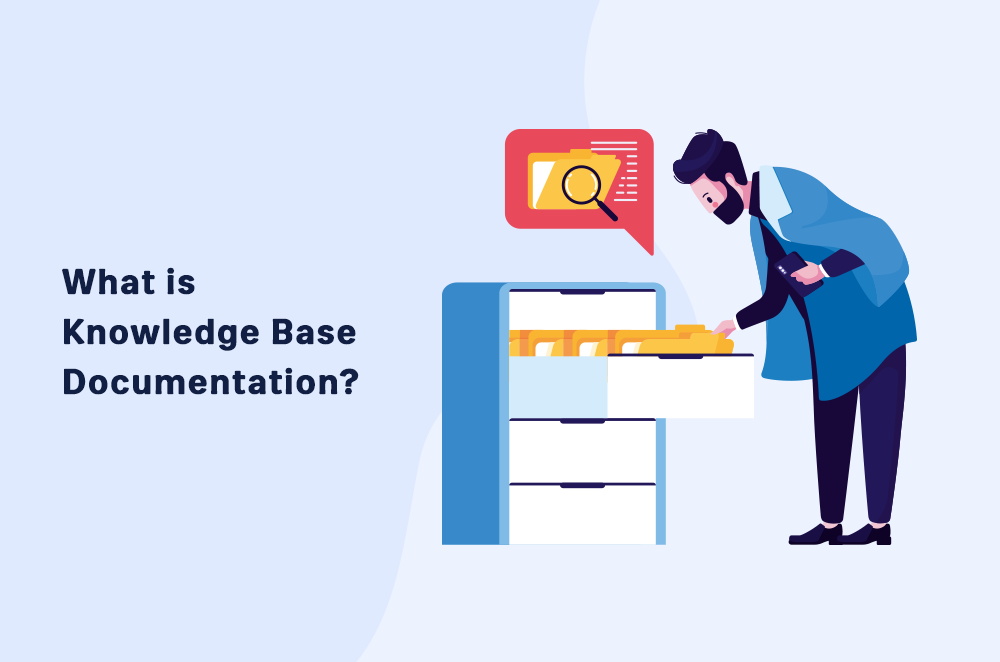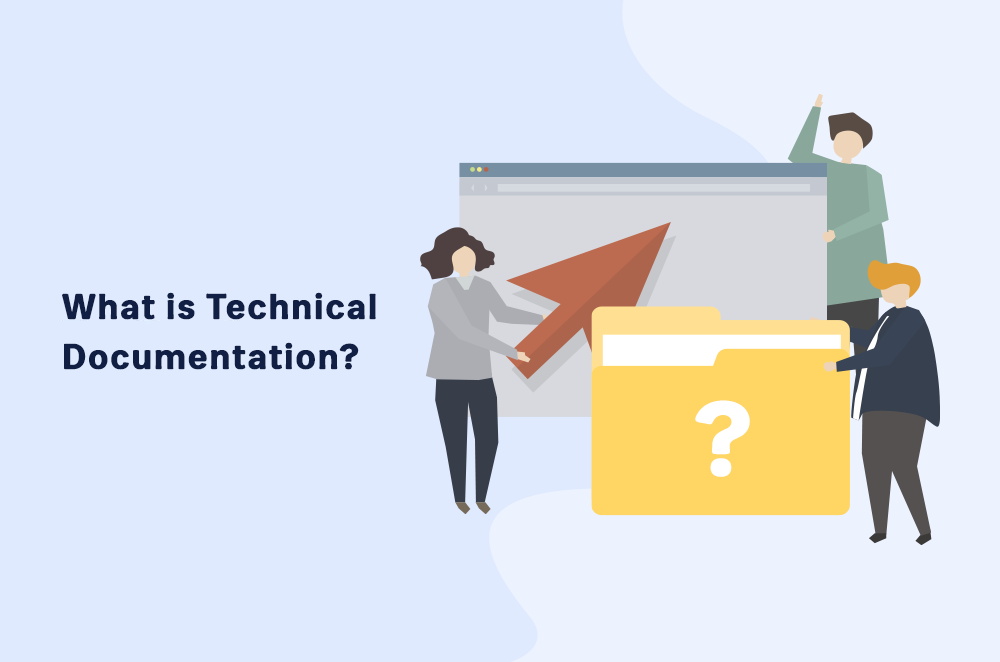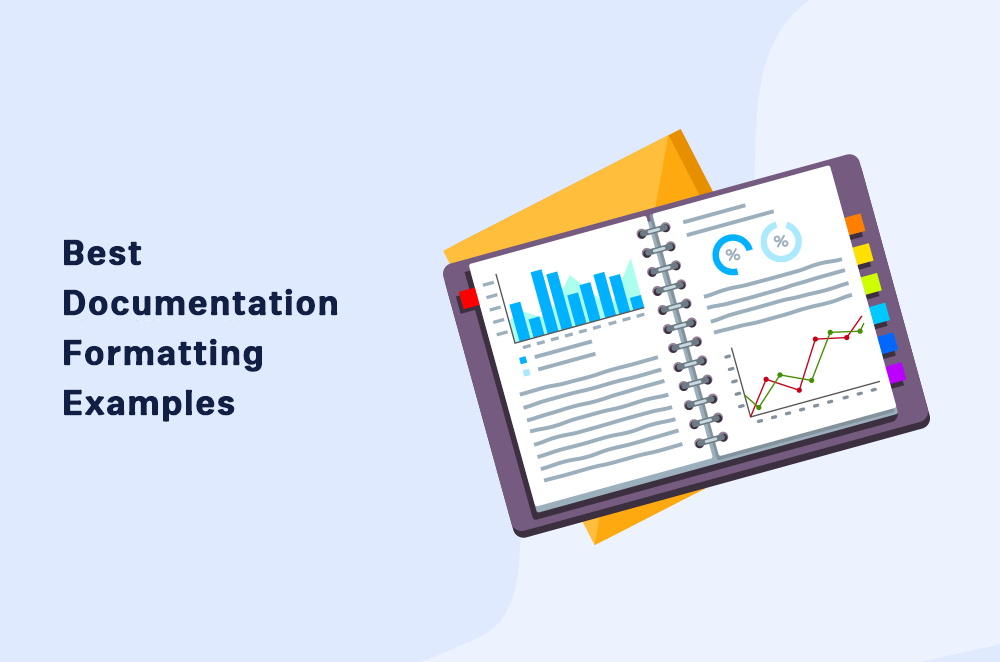Knowledge base documentation is all the articles, guides, and content that helps customers and employees get the information they need.
It can include knowledge base articles, directories, best practices, standard operating procedures (SOPs), and more.
Depending on what you’re using a knowledge base for, the documentation can vary. For example, if you’re designing a knowledge base for your customer support team, the documentation would consist of case studies, support templates, and standard answers.
Alternatively, if the knowledge base is for customers, it would include product information, how-to guides, and self-service content for better customer satisfaction.
In this article, we’ll go over what knowledge base documentation is and how you develop your own.
Let’s get started.
Knowledge Base Documentation Features
A knowledge base centralizes all your company data in one place so that it’s easily accessible. That’s why there are two different kinds of knowledge bases for both your customers and your employees.
- Internal Knowledge Base – This is for internal company use and for employees only. They come in handy when onboarding new employees and training existing employees. It also acts as a central repository of information that is accessible from anywhere.
- External Knowledge Base – This is for your customers and all their needs. Usually, an external online knowledge base acts as self-service content. That’s because it allows customers to find the answers to their questions and queries by themselves.
For the most part, companies tend to invest in both kinds of knowledge bases; albeit, for different reasons.
Regardless, they tend to use knowledge base software to help them manage their knowledge bases. That’s because the sheer amount of documentation that you have to make requires excessive knowledge management.
Your marketing team or your customer service team alpine cannot manage an entire knowledge base.
That’s why the internal knowledge base software or external knowledge base software helps streamline everything.
As a result, choosing the right knowledge base software is crucial because it can be the difference between good and bad documentation.
Some software have many knowledge base tools like a built-in editor, customizing tool, and attachment tool. These tools minimize the need for third-party applications and software, streamlining the documentation process.
To create content for knowledge base documentation, it’s important to understand what your customer or employee needs. In all cases, your focus should always be on the employee or customer experience.
How to Write Effective Knowledge Base Documentation
Effective knowledge base management requires a robust documentation process that takes all factors into account.
Writing documentation is not as simple as hiring a technical writer and having them create content. You have to keep search functionality, the internal structure, frequently asked questions, and visual learners in mind.
That means you need to approach knowledge base documentation from different perspectives.
While the process for content creation, in this case, will vary depending on the industry and organization, you can follow a few essential steps to ensure success.
Keep in mind that you will consistently need to keep your reader in mind when creating knowledge base content.
1. Plan Your Documentation
The first step to writing documentation always comes with tons of planning. Great documentation is the result of excessive planning before any form of writing.
That means that each individual article needs to follow a specific plan:
- Choose a real customer issue (or employee issue) to address
- Figure out where to find relevant information
- Decide on the best way to present the information
It’s best to create a base knowledge base content plan and follow it for each topic. It’s important to have at least one article per topic; however, if you intend on creating additional documentation, it’s best to give it a directory format.
Once you have your documentation topics, note down all the primary thoughts to develop the initial outline.
Take a look at the customer support tickets or your team members’ memos. Figure out exactly what your target audience needs help with. However, don’t limit it to just what your audience needs; add upon it to encompass the entire problem.
The more problems and issues you can address, the best. However, remember the best practice to divide individual issues and solutions.
After that, arrange all your notes to create an internal structure to reflect your audience’s process. Depending on what you’re creating the documentation, make sure you have your information in chronological order.
For example, if you’re creating a help center for customers, make sure all the steps are in the right order. Furthermore, it’s also best to adopt an easy-to-hard process where you place the easier steps at the beginning.
After the outline is complete, recheck it and get the whole team to go over it too. Then, move to the next step.
2. Create the Documentation Titles
After the planning phase, you can move on to figure out and decide on the right documentation titles. It’s crucial to get these right because it’s how your audience will be searching the documentation.
Either the reader will use the search function to type a specific keyword or they will be browsing through a list of topics. In either case, you need to make sure your documentation title immediately resonates with the issue.
That means the keyword should be in the title and it should also tell what the document entails.
For example, if the keyword is ‘set up my Facebook account,’ then the title should be something along the lines of “How to set up my Facebook account.”
That title includes the keyword and it determines that this is a tutorial on how to do it.
Therefore, each documentation title should clearly state the problems or task. It should be straightforward, simple, and to the point.
Remember that the idea here is to not create something that catches a reader’s eye. The search intent, in this case, will always be direct and will not require any additional effort.
3. Start Writing the Knowledge Base Documentation
After you have your titles, the next step is to start writing and create your first drafts. If you have any existing content, now’s the time to make use of it.
You need to keep in mind that the point of writing knowledge base documentation is to provide help and information. Therefore, it needs to be precise, clear, and direct.
The reader should easily be able to understand the content and follow any steps in the documentation. Longer articles require even more scrutiny because they need to be easily skimmable.
Similar to long articles, ultimate guides also need good divisions of content. More importantly, the divisions should be recognizable by search engines so they can easily show up in the search results.
While you will be following your outline, there’s a good chance you’ll notice opportunities for improvement. Capitalize on them, follow the style guide, and progress in logical steps.
Most importantly, avoid any technical jargon or terms. Instead, explain any complex information or steps. For that, you can work with subject matter experts. However, a subject matter expert can only provide details, they can’t simplify a topic, so don’t rely on them.
Never Make Any Assumptions
It’s crucial to never assume that your reader would know something. Even if you have to explain the most basic action, you should make an effort to do so.
That’s because you never know how familiar the reader is with something. Even if you’re writing advanced documentation, it’s still best to link to other documentation that explains a specific action.
The idea is to minimize any instances of confusion among readers.
Furthermore, the best way to follow this role is to put yourself in the shoes of a reader with no information. That would force you to provide even the smallest details.
On top of that, it’s also best to provide an example to clarify a point. For example, if you’re writing documentation on new features, then explain what it is, how it works, and provide some use cases.
Remove all sorts of guesswork from the documentation to make it as helpful as possible.
Minimize the Use of Technical Terms and Jargon
Moving on, since the documentation aims to self-serve readers, it’s important to avoid all sorts of technical jargon. That means sticking to common words and phrases that are easily understandable.
If you are at a point where using a technical term is necessary then make sure you explain and define it. Furthermore, add a glossary or notes to further provide context.
On top of that, whether you’re talking about key features, company policies, or anything else, make sure you keep the same tone and language.
You can research what your users prefer and use that to stick a certain style guide.
Furthermore, always follow a step-by-step pattern for all instructions so that it’s easier to understand. Bundle of similar and same questions that may pop up.
More importantly, don’t provide any opinions in the documentation. You’re not selling something or persuading your users. The point is to simply help your readers.
That also means there shouldn’t be any analyses or casual advice. Your job is to provide helpful information according to the reader.
However, to provide faster service, you can list down common problems and frustrations in the introduction part of the documentation. Then, point to the solution to each problem in the documentation.
Most popular articles in knowledge bases are the ones that take the users the least amount of time to find answers.
4. After the First Draft, Improve Formatting for Better Readability
After you’re done with the writing part, the next step is to format the document for readability. A wall of text is the opposite of what you’re aiming to do.
Therefore, start by using basic formatting tools. A good knowledge base tool will allow for extensive formatting options. That’s why you should keep this in mind when choosing the right tools for your organization.
In any case, use the following tips to improve the formatting of your documentation.
- Break down the document into different sections and paragraphs and organize them using headings and subheadings.
- Make use of bullet points, number lists, and tables to display information in better ways.
- Provide notes and a glossary for certain terms and concepts.
- Include a detailed table of contents with accompanying anchor links to help users get to what they need immediately.
- Utilize the bold, italic, underline, and highlight options to emphasize certain information.
- Make sure all the information is up to date.
The idea is to allow readers to access information quickly and accurately. An immediate response to a search query is much more likely with better formatting.
5. Provide Relevant Links
Usually, each document would provide all the information a reader needs but at times, users may need more.
That’s why you see so many links in every Wikipedia article; Wikipedia is a great example of a massive external knowledge base.
If you have broken down your document into several subdocuments then link to the others. Furthermore, provide links to related documents that the reader may need to see.
When you add articles, you’ll also have to update previous ones to add links to the new articles.
However, you also need to keep in mind that the links need to follow a strategy. You can’t just jam links and expect them to work. That would break the flow of the document and distract the reader.
Lastly, add related documents and options for further reading at the end of the document.
At times, readers don’t know about a problem they may be facing. Or, they can find useful information and find out something they didn’t know about the product or organization.
6. Provide Graphics, Visuals, and Attachments
Regardless of how well-written any document is, it’s always better to add visual aids and other attachments.
The idea is to make the information more understandable and accessible. For example, showing how to create a Facebook account will always be better than providing text instructions.
It’s best to make use of screenshots and videos to explain any concept or topic.
Screenshots are best when you’re providing step-by-step instructions. You can even use the screenshots to fill certain gaps so there’s less text but the same amount of explanation.
A screenshot can become better if you use numbers, circles, arrows, and pointers to draw the attention of users to specific points. Furthermore, you can use a GIF instead of a screenshot to provide a quick visual of an action.
Also, make sure you always add the screenshot or graphic after the text instruction.
Furthermore, using videos is best for tutorials, demos, and step-by-step instructions. Videos tend to work best as they can be extremely engaging. It also allows users to jump straight to the exact information they’re looking for.
Video placement is usually at the top of a document so a reader can immediately decide whether they need video or text instructions.
You can further enhance the video experience by adding subtitles or a transcript for readers with hearing disabilities or people who don’t prefer the sound.
Other attachments may be custom vector graphics, infographics, 2D animated explainer videos, and even audio files.
7. Review the Documentation
The last step is to review the documentation before you publish it. It’s not necessary to publish the latest version because at times you may find that a previous version better suits your audience.
Make sure you review the entire document for any grammatical or spelling errors. Also, check the sentence structure and formatting.
Furthermore, you should double-check all the information, tips, and facts in the document. They should be accurate and up to date.
The only way to ensure the success of your knowledge base documentation is to ensure all the information is accurate and consistently helps users.
Wrapping It Up
It’s safe to say that knowledge base documentation is a cost-effective way to provide good customer support. At the same time, it can act as a centralized repository of information for your organization.
That’s why it’s crucial to build the knowledge base with the intention of utilizing it for the long term.
Therefore, choose a knowledge base software that you can work with, in the long run. Make sure it has features like built-in editors, integration support, attachment options, sectioning features, and most importantly, an intelligent search bar.












